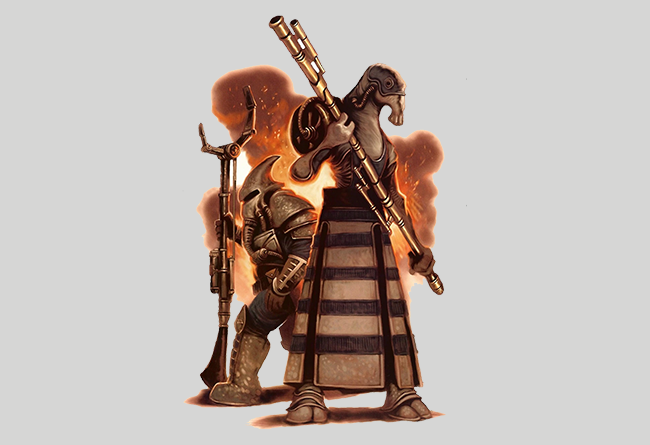Species: Hassk
Home Planet: Hasskyn
Attribute Dice: 12D
DEXTERITY 1D/3D+2
KNOWLEDGE 2D/4D
MECHANICAL 1D/3D+2
PERCEPTION 2D/4D+2
STRENGTH 1D/2D+2
TECHNICAL 1D/4D
Special Abilities:
Large Ears: Because of their large ears, Hassk gain a +1D bonus to all search skill checks that involve their sense of hearing. They are more susceptible to sonic attacks, and suffer a –2 pip penalty to all Strength rolls made to resist the effects of sonic weapons and attacks.
Night Vision: Consider darkness “normal” daylight, adding +1D to per, search and realated activities.
Fangs: The sharp teeth of the Galidyn inflict STR+2D damage.
Story Factors:
Pirates and Gangs: Many Hassk seek employment in piracy and in gangs. Their fierce behavior appeals to these groups.
Littermates: Multiple births were known to occur among them, with the siblings being referred to as littermates
Move: 8/10
Size: 1.2 – 1.5 meters
Background: The Hassks were a sentient species that were native to Hasskyn. They were almost completely covered in fur, except for their gray-skinned faces. They had sensitive hearing and keen night vision, all the better for hunting. Hassk were near-feral, and were thought of by most as wild animals. They lived in a primitive culture with limited technology. When they were first confronted with space travel, many left their homes and sought out worlds to wreak havoc, particularly in places of ill repute. A number of Hassks came to join Kragan Gorr’s pirate gang. The Hassk triplets were thugs who spent time at Takodana Castle stirring up trouble.
Hassks were a species of subhumanoids native to Hasskyn. Their bodies were almost entirely covered with cream-colored fur. Their faces, however, were hairless, revealing grey or cornflower blue skin. They had sensitive ears, two large forward-facing eyes that could be orange in hue and gave them a keen night vision. Their mouths were filled with flesh-tearing fangs and had powerful jaws that could cause serious damage.
Despite being sentient, the Hassks had a fierce behavior, suggestive of wild animals, and their culture was primitive. Multiple births were known to occur among them, with the siblings being referred to as littermates.





